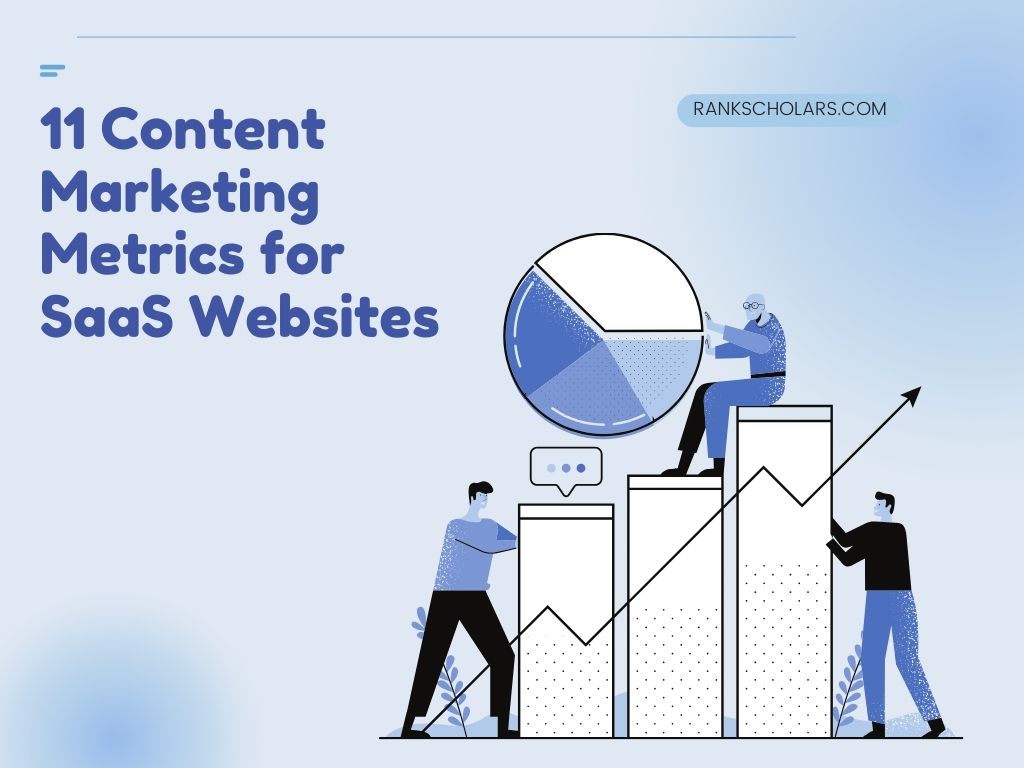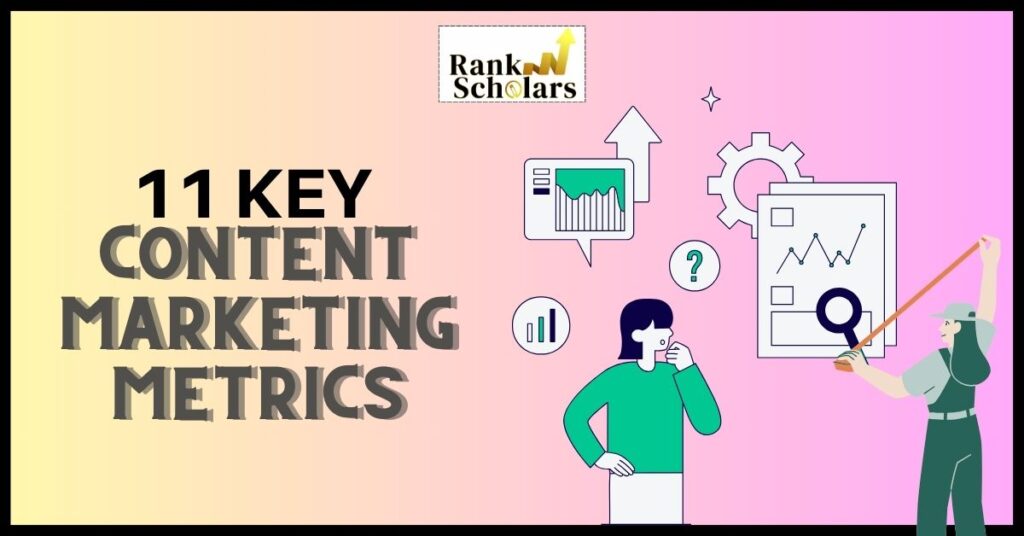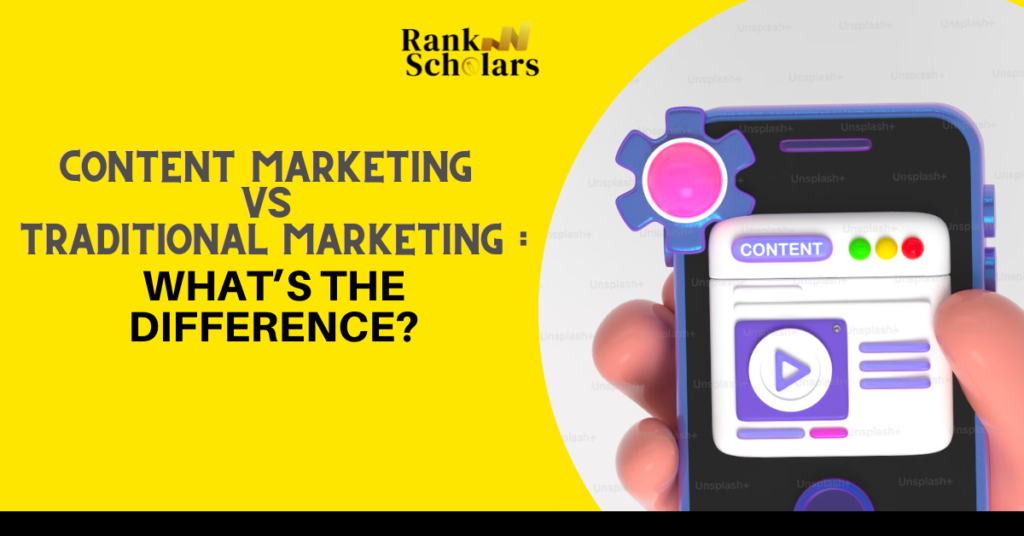Suppose, you have a SaaS company with a product sending cold outreach emails. To incur $10M in revenue annually, you start at the bottom and go up the top of the funnel. This is where a carefully crafted content marketing strategy helps you generate more paying customers.
It is essential to monitor your SaaS content marketing strategy for maximum results. This article will teach you how to measure SaaS content marketing to establish your brand reputation.
What are Content Marketing Metrics?

Semrush reports claim that 84% of businesses have content marketing strategies. However, only 11% feel their content marketing strategy is positively working.
To determine if your content resonates with your audience, content marketing metrics, and data-driven information analyze user behavior. They detect the number of times a piece of content drives conversion rates and find content engagement.
What’s more? They help you set priorities for your content marketing strategy, and you can use these metrics to decide the next step for your marketing goals.
Also Read: SaaS Content Writing: 9 Best Tips + 11 Formats for Conversion
Why is it Important to Measure Saas Content Marketing Metrics?
The latest data claims content marketing revenue will reach 107 billion dollars by 2026. If you’re still unsure about the significance of SaaS content marketing, these pointers will shed some light.
- It helps in planning future content
- You can evaluate success through Key Performance Indicators (KPIs)
- It provides data on audience engagement
- You can understand how to go about demand generation
- It lets you know if your brand awareness is improving
What Type of Metrics You Should Watch for?

Check out the following key metrics to understand how to measure SaaS content marketing and its success rate.
1. Consumption Metrics
It is the number of people and the channels used to consume your content. These metrics also determine the depth and frequency of content consumption. From downloads to session lengths, these metrics help you get started with improving brand value.
2. Retention Metrics
Along with consumption metrics, these metrics offer an idea about whether your product is gaining traction with the audience. It may be retention over different timespans like monthly, quarterly, or annually. Accordingly, you can adopt solutions to increase customer satisfaction and build customer loyalty.
Retention metrics are divided into core and proxy. Core asserts if the user stays for a certain duration, they will most likely stay long-term. However, proxy includes the core actions of users in interacting with a service, or product.
By looking at the present consumer behavior, you can predict how they will behave afterward. For example, if you are a SaaS company selling an email platform, your proxy retention will be its regular day-to-day usage.
3. Engagement Metrics
These metrics are essential to measure the success of your content marketing efforts. They track the audience’s interaction with your content. It could be via likes, shares, reactions, or comments, indicating how your content resonates with the target audience. These enhance your brand awareness and help gain more traffic.
A significant engagement metric, comments prove that people are interested in engaging with your content. For maximum customer satisfaction, you should always try and reply to all user comments.
For example, suppose, you are launching a new marketing software in the market and encouraging customers to create campaigns using the tool. To make it lucrative, you can decide a winner among the audience who share the campaign on their social media pages. You may gift them a free premium subscription to the software.
4. Lead Generation Metrics
Your content performance impacts the number of leads generated for your brand because leads can convert into your customers which directly impacts your sustainable business growth. It is important to remember lead quality has a greater role than lead volume in establishing a cost-efficient customer acquisition process.
Lead generation metrics develop marketing campaigns to attract prospects and guide them through sales funnels toward purchasing. It points out any constraints in the customer journey, so you can refine it and bring in the highest converting leads.
5. Cost Metrics
SaaS businesses should be aware of the costs involved in content creation like operational expenses, costs of products/services, and marketing costs. They should also know if this cost is fetching them more revenue.
After calculating cost metrics, you can compare your performance over time to detect areas where you might be spending more or less.
Also Read: How Content Marketing Is Changing the Game For Businesses
11 Content Marketing Metrics for Saas Websites

Content is the pillar of marketing. Therefore, a robust content marketing strategy is necessary to create content that can educate the audience, foster brand awareness, and increase growth. Below is a list of 11 content marketing metrics that will help you understand how to measure SaaS content marketing.
1. Impressions
The number of times your webpage appears in search results refers to impressions. By tracking total impressions and search impression rate, you can detect if your content is driving brand awareness.
Impressions help you understand the potential for reaching more people with brand messaging. If you want to increase impressions, you may optimize your website using Semrush.
2. Click-Through Rate (CTR)
It gives an insight into how engaging your content and call-to-action (CTA) is for users. Click-through rates reveal how you can optimize your content for better performance.
Suppose, you own an animation agency and you post content related to graphic designing and animated videos. However, you find a low CTR because your meta titles and descriptions are not catchy enough for users to click on your website. In this case, using Google Search Console can help you get more click-throughs on your website.
3. Organic Traffic
The traffic you get on search engine results pages (SERPs) without paying for rankings or advertisements is the organic traffic. You must track total organic traffic to gain insights into how many viewers are checking your website. It will lead you to analyze if your content strategy is in place or needs improvements.
Hubspot is a useful tool to assess which topics or blog posts are drawing more audience.
4. Organic Rankings
Organic rankings are vital for attracting potential customers. It takes time for organic search rankings to crawl and index your pages. According to research, only 5.7% of webpages rank in the top 10 search engine results within the first year. This is why you should use efficient tools such as SE Ranking to improve and execute organic search engine rankings.
5. Signups/Leads
When a person expresses interest in purchasing your product/service, it may result in lead generation. Leads may come from sales, marketing, services, or products for your company. Leadfeeder is an effective tool to qualify leads and increase sales.
6. Unique Visitors
A user accessing a webpage via a specific Internet Protocol (IP) address is termed a unique visitor. This metric is used to estimate a page’s readability and potential to convert leads. Further, a higher number of unique visitors signifies the successful growth of your website or company.
Here, Google Analytics can show if someone is visiting your page often. For instance, if a user visits a web page and moves to 2 other pages, leaves the site, and returns to view more pages, they will be a unique visitor.
7. Average Time Spent
It measures the average time users spend on a page during a single session. It is a powerful way to check if your content is compelling enough to attract and retain visitors. The formula to calculate this:
Average Time Spent = Total Time Spent By All Visitors On The Webpage/ Total Number Of Visitors
Google Analytics is a free tool that helps you configure your business performance and realign business goals by determining the success of each webpage.
8. Scroll Depth
73% of users skim through blog posts while only 27% consume them till the end. How far users scroll on webpages is measured through scroll depth. It is also calculated in terms of vertical or horizontal scroll direction.
Thus, you can analyze the effectiveness of your pages and how you can make them more appealing through tools like Google Tag Manager. The formula to calculate this:
Average Page Scroll Depth = Sum Of All Scroll Depths/ Total Number Of Page Viewers.
Suppose, you are an eCommerce brand with a product page. While tracing the user journey you find out that a user has only scrolled through 25% of the page before navigating. The scroll depth is 25% in this case.
9. Bounce Rate
This metric shows the number of people leaving your website after viewing a single page without any engagement or interactions. The formula to calculate this:
Bounce Rate = Single Page Sessions/Total Number of Sessions.
It is important to track bounce rates to understand whether your content is relevant and driving conversions or not. Besides organic ranking, measuring the bounce rate helps you refine the overall user experience.
If bounce rates tend to increase, you should implement strategies to entice users to your website. Backlinko may come in handy to detect bounce rates and avoid them further.
10. Pages Per Session
It implies how many web pages users are viewing on a single visit per session. For example, if users find one blog post relatable and engaging, they may go to another page for more informational content. You may resort to Google Analytics to discover page views per session.
11. Customer Acquisition Cost
It is the total cost of obtaining a new customer. Here’s the formula:
Customer Acquisition Cost (CAC) = Total Sales Expenses/Number Of Customers Obtained During A Specific Period.
By going through these costs, you get an idea of how to adjust expenses and the potential results. Using Hotjar will give you a clear picture of customer acquisition costs for optimizing your marketing strategies.
Also Read: How to Use a B2B Content Marketing Funnel to Drive Leads and Sales
Final Words
Once you know how to measure SaaS content marketing, you can scale your business to heights. Though content marketing metrics offer solid insights into your content performance, those data may not always give you the bigger picture.
Nevertheless, if you want to drive your SEO traffic from 20k visitors/month to 500k visitors/month or more, you should invest in content marketing. If done correctly, you will be able to make users sign up to use your products, or services right away.

A freelance content writer, Madhurima loves illustrating her thoughts and crafting engaging content. On days when she’s not so busy, you’ll find her painting or reading her favourite novels



